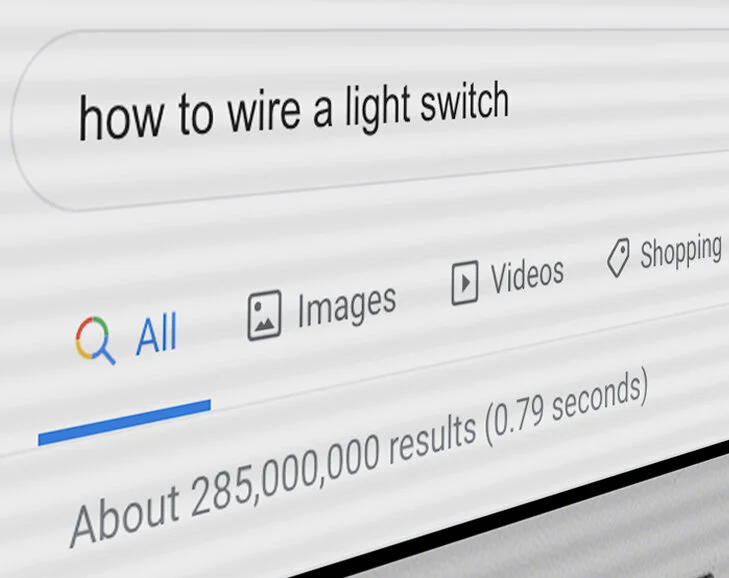At P&T we celebrate our ties to Cincinnati; we love being part of the community here. It has a laid back Midwest personality and a palpable culture of innovation and industry. It also has an affordable cost of living and great housing opportunities. There are new hi-rise condos and historic multilevel buildings downtown plus Ranch-Styles or Cape Cods in the suburbs.
Some of us here in the studio have made our homes in older houses that come with some significant maintenance demands. As designers we consider it a personal challenge to answer the call for repairs and reconstruction. Besides, it’s a breeze to Google a maintenance topic and let the experts on YouTube walk us through whatever wiring, plumbing or painting projects we’ve taken on.
A breeze.
Except that there are about 283 million results for, say, “how to wire a light switch”. They can’t all be right can they? And why is one fifteen minutes long and another is just two minutes? How do we sift through the information to find what we’re looking for?
You can usually tell in the first 10 seconds whether the video is going to be any help. Home repair videos tend to fall into one of a few categories:
“Experts” who post information to promote their services or sell products - these are verbose and take a long time to get to the point.
People who think they’re experts and enjoy talking on camera. This may also consist of DIYers whose side hustle is making videos to get a check from Google for paid advertising. These are also unnecessarily long in order to meet some time requirement in the fee algorithm. Also, sitting through ads.
Competent professionals or lay-persons who know what they’re talking about and don’t mince words. If you find a retired professional, you’ve struck gold. Subscribe to that channel.
Dissertations about wire gauge, tool selection, and correcting mistakes are par for the course but are unhelpful if you’re looking for baseline information. Occasionally you might find a video made by someone who knows what they’re talking about and has the gift of brevity. These are usually low production quality, but have a lot of views. Views by people who are trying to get stuff done. This is where I find the principle of Occam’s Razor coming into play.
Pluralitas non est ponenda sine neccesitate.
Literally interpreted: Entities should not be multiplied unnecessarily.
Much ink has been spent debating the principle’s intent and origin, but I’m sticking with it’s prevailing interpretation.
All things being equal, the simplest answer is usually the right one.
Cited in one form or another by Einstein, Hawking and others, it serves as a reductionist tool for making decisions. The irony of searching for help online is that in looking for a simple answer, I’m presented with so many possible solutions, that the potential for selecting a wrong answer is exponentially greater.
If you find yourself watching an instructional video or reading an article and it just doesn’t make sense, it’s a safe bet you’re better off just hitting the back button. Wiring a light switch shouldn’t be complicated. Most of basic home repair & maintenance isn’t complicated. If it feels complicated you’re likely a victim of too much information. To whittle it down you could be better off with an image search. It may take only an instant to see in a diagram what an influencer takes 12 minutes to explain.
Simple answers are elusive, and asking a professional is usually a good idea, but it’s asking a lot to get information that’s digestible. It’s easy for a professor of physics to write a book about physics for scientists, but it takes special skill and effort for that professor to write something that will make the topic accessible to laypersons. So the plethora of YouTubers out for hits on their channel may be excused for dispensing expertise through the proverbial fire hydrant. In the free marketplace of information you often get what you pay for. But if you’re willing to pay attention, you may find something of value without looking through 283 million search results.



